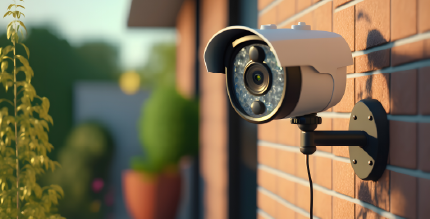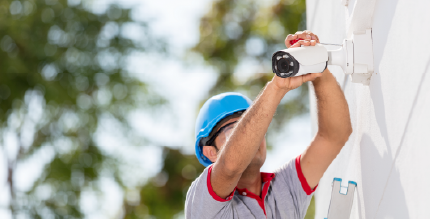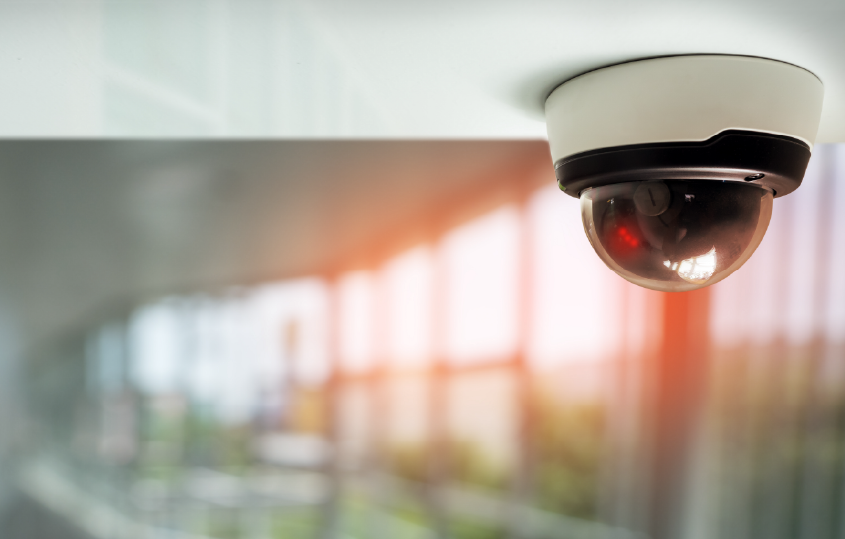As our world has become increasingly interconnected with the watchful gaze of technology, security cameras have become an integral part of our lives. They offer us peace of mind by letting us know our belongings and loved ones are safe and protected. With a wide range of options available, understanding the different types of security cameras available and their unique features can be a daunting task. In this blog, we will delve into the various types of surveillance cameras, their applications, footage quality, and their unique features to help you make an informed choice when choosing a system to protect your home.
Indoor vs. Outdoor Cameras
Indoor Cameras
Indoor security cameras are designed to monitor the interior of buildings and spaces. They come in various forms, including domes and hidden cameras disguised as everyday objects. These cameras focus on providing clear footage for identifying faces and activities within confined areas. Some models feature two-way audio, enabling you to communicate with people on the other end.
Outdoor Cameras
Outdoor security cameras are engineered to withstand harsh weather conditions while maintaining reliable surveillance. Bullet cameras, dome cameras, and pan, tilt, and zoom (PTZ) cameras can all be adapted for outdoor use. Look for cameras with high IP (Ingress Protection) ratings to ensure they are resistant to dust and water. Many outdoor cameras are equipped with motion sensors and smart alerts, enhancing their ability to detect and record suspicious activity.

Specific Types of Security Cameras
Dome Cameras
Dome cameras, named for their dome-shaped appearance, are a popular choice for indoor cameras. Their discreet design allows them to blend seamlessly into various environments, from retail stores to offices and even homes. Dome cameras normally come with pan, tilt, and zoom (PTZ) capabilities, allowing users to adjust the camera’s orientation remotely and monitor different angles without installing multiple cameras. They offer high-resolution footage and often have night vision, motion detection, and even two-way audio communication features.
Bullet Cameras
Bullet cameras, named for their cylindrical shape resembling a bullet, are commonly used for outdoor surveillance. Due to their large field of view, they’re well-suited for monitoring larger areas such as parking lots and entrances. Many bullet cameras are weatherproof and equipped with infrared (IR) LEDs for enhanced night vision, making them suitable for various environmental conditions.
PTZ Cameras
Standing for pan, tilt, and zoom (PTZ), these cameras offer control and flexibility for both indoor and outdoor security. Systems involving PTZ cameras are invaluable for actively tracking moving objects or individuals, making them suitable for areas that require continuous monitoring. These camera systems are often found in casinos, large commercial spaces, and government facilities. Their high-quality optics provide impressive footage quality, and some advanced models may have features like auto-tracking, preset tours, and image stabilization.
IP Cameras
Internet Protocol (IP) cameras are digital cameras that transmit data over a network, such as the internet or a local intranet. They provide high-quality footage and can be accessed remotely through a computer or a mobile app on a smartphone. IP cameras often have advanced features like motion detection, cloud storage, and integration with other smart home devices.
Box Cameras
Box cameras, characterized by their distinct boxy shape, are versatile cameras commonly used in professional surveillance setups. Unlike dome or bullet cameras, box cameras do not have built-in housings, allowing for greater customization. They offer interchangeable lenses, enabling users to select the camera lens that best suits their monitoring needs, whether that be wide-angle coverage or long-range zoom. While box cameras may lack the aesthetics of other types, they make up for it in their adaptability and image quality.
Wireless Cameras
Wireless security cameras offer easy installation without the need for extensive wiring, as wired cameras can be a hassle to set up and contend with. They communicate through Wi-Fi networks and can be placed virtually anywhere within range. While wireless cameras have made significant strides in image quality, it’s important to consider factors such as how sometimes these cameras connect to different frequencies, leading to potential interference. They also often have low signal strength but do offer convenience in cases such as nanny cams or as a video doorbell.
Thermal Cameras
Thermal cameras, also known as infrared cameras, detect heat signatures rather than visible light. This unique capability allows them to provide surveillance in challenging conditions, such as complete darkness, fog, or smoke. Thermal cameras are commonly used in perimeter security, law enforcement, and search and rescue operations. They can detect intruders, even if they attempt to camouflage themselves, providing an additional layer of security.
Compatibility Among Camera Types
All of the cameras discussed in this article can be integrated into a CCTV camera system. However, many cameras require professional installation for proper placement and connection. The only true exception is wireless cameras, which are often battery-powered and used for more recreational use inside the home rather than for extensive security purposes.

Navigating Options With Assistance From Mesa Alarms
Understanding the nuances of different types of home security cameras and selecting the right ones for your specific needs can be difficult. With the rapid advancements in technology, staying up to date can be overwhelming. If you are in the Houston area and need guidance in choosing the perfect security camera setup, Mesa Alarm’s team of experts is here to help. With years of experience and a deep understanding of the evolving security landscape, they can assess your requirements and provide tailored solutions that ensure your peace of mind.
In conclusion, security cameras play a pivotal role in safeguarding our homes, businesses, and public spaces. Each type of security camera offers unique features and capabilities, from discreet indoor monitoring to long-range outdoor surveillance. By understanding the applications, footage quality, and distinct features of different camera types, you can make an informed decision that aligns with your security needs. And remember, while the array of options might seem overwhelming, professional assistance is always available to guide you toward a security solution that suits your requirements. Consult with Mesa Alarms today by visiting our website.



